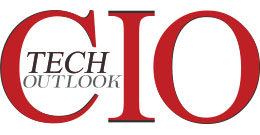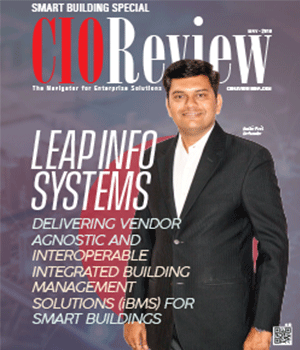How to Make Risk Heatmaps More Effective
Shankar Bhaskaran, Managing Director – India, MetricStream
 Shankar Bhaskaran has over 20 years of expertise in driving business performance through integrated Governance, Risk, Compliance (GRC), and Quality Management solutions. He specializes in applying industry best practices via user-friendly platforms to enhance operational excellence across diverse sectors, including pharmaceuticals, medical devices, manufacturing, energy, healthcare, financial services, food & beverages, and automotive industries.
Shankar Bhaskaran has over 20 years of expertise in driving business performance through integrated Governance, Risk, Compliance (GRC), and Quality Management solutions. He specializes in applying industry best practices via user-friendly platforms to enhance operational excellence across diverse sectors, including pharmaceuticals, medical devices, manufacturing, energy, healthcare, financial services, food & beverages, and automotive industries.
Risk heatmaps have long been a staple in enterprise risk management, providing a straight forward yet powerful way to assess potential risks. Yet, traditional heatmaps often fall short as the risk landscape gets increasingly complex and interconnected. They tend to be over simplified, static, and subjective, which could limit their effectiveness in decision-making.
So, are risk heatmaps still relevant? The answer is yes—but only if they evolve. Organizations need to refine their approach to risk heat mapping by incorporating more dynamic, data-driven, and context-aware methodologies.
Understanding Risk Heatmaps
A risk heatmap visually represents risks by plotting them based on two primary factors: namely, likelihood and the severity of consequences if the risk materializes.
Colour coding indicates severity, making it easy to prioritize risks and develop effective mitigation plans. While this simplicity makes heatmaps valuable, it limits their ability to capture interconnected, evolving, and qualitative risks.
Limitations of Traditional Risk Heatmaps
Traditional risk heatmaps fail to capture the complex landscape of interconnected risks. Here’s how:
Limited Scope
Traditional heatmaps assign numerical values to risks but fail to capture the full context in which these risks exist. This can lead to misleading conclusions about the severity of risk and effective mitigation strategies.
Oversimplification
Heatmaps reduce risk to a two-dimensional scale. In the process, they ignore the complex interdependencies between risks. They do not account for cascading effects or how one risk might amplify another.
Inaccurate Worst-Case Scenarios
Heatmaps often neglect the full spectrum of potential outcomes by focusing on worst-case scenarios. This lack of nuance can hamper effective decision-making.
Emphasis on Quantifiable Risks Only
Heatmaps primarily focus on measurable risks, such as financial losses, while overlooking qualitative factors, including reputational damage and strategic misalignment.
Manual and Subjective Assessments
Risk evaluations are often based on human perception, which could introduce bias and inconsistency. Different teams may assess the same risk differently, leading to unreliable data.
Static Nature
Risk landscapes are constantly evolving due to changes in regulations, technological advancements, and shifting market dynamics. Traditional heatmaps render them quickly outdated.
Misalignment with Organizational Goals
If heatmaps are not regularly updated to reflect business priorities, they may not effectively support enterprise-wide risk management strategies.
Data Quality Issues
Heatmaps require accurate, high-quality data to be effective. Incomplete or outdated data can lead to misleading assessments and poor risk prioritization.
Prone to Bias
The initial risk evaluation can create an anchoring bias, where risk ratings remain unchanged despite the introduction of new information.
Enhancing the Effectiveness of Risk Heatmaps
Despite their limitations, heatmaps are still valuable for quickly identifying and prioritizing risks at the enterprise level. However, organizations need to adapt specific, different ways to improve their effectiveness:
- Integration with Advanced Risk Assessment Tools
Risk heatmaps should not function in isolation. By combining them with additional risk assessment tools like those below, it is possible to create a more comprehensive risk framework:
Risk Registers: Provide detailed descriptions of risks, their impacts, and associated mitigation strategies.
Bow-Tie Analysis: Maps the cause-and-effect relationships of risks.
Quantitative Risk Assessments: Use statistical models for precise risk measurement.
Risk Modeling: Simulates risk scenarios for better decision-making.
Risk Appetite Statements: Define acceptable risk thresholds to align with business objectives.
Key Metrics: Use Key Risk Indicators (KRI), Key Control Indicators (KCI), and Key Performance Indicators (KPI) to track risk trends.
- Make Heatmaps Dynamic
Organizations should avoid static heatmaps and implement real-time updates using AI-driven analytics. Automated data feeds and risk dashboards enable heatmaps to reflect the latest risk landscape, underscoring the need for dynamic risk management strategies.
- Capture Risk Interdependencies
Instead of evaluating risks in isolation, mapping how risks interact is key. Understanding cascading risks allows businesses to address potential chain reactions proactively.
- Improve Data Accuracy
Automating data collection and using AI-driven insights can reduce subjectivity in risk assessments. It is also essential to conduct regular audits to verify accuracy.
- Contextualize Risks
Heatmaps should be supplemented with qualitative data that provides context on regulatory requirements, industry trends, and business priorities. This ensures risks are evaluated within the proper framework.
- Use AI and Machine Learning
AI-driven risk assessment tools can take heatmaps to the next level by analyzing vast datasets, identifying patterns, and predicting emerging risks. This presents a more accurate and dynamic approach to risk visualization.
Case Study: How a Global Healthcare Conglomerate Enhanced its Risk Management
A global healthcare company faced significant challenges as its risk landscape grew increasingly complex. With operations employing a siloed approach to risk and compliance management and capabilities spanning multiple regions, risk management was becoming inefficient due to varying data structures, a siloed approach, and duplication of effort. The company lacked a consistent GRC nomenclature and relied on traditional tools and technologies, such as spreadsheets.
The company successfully implemented an enterprise-wide program to replace its existing decentralized and distributed risk and compliance process for suppliers across over 250 operating companies. Key improvements included:
- Integrating data from multiple risk assessment processes done on different phases of the supply chain
- Aligning processes and data to develop an executive view of end-to-end risk heat maps.
- Consolidating risk data in one place
These initiatives enhanced the company’s risk visibility and forecasting capabilities while streamlining compliance processes. By modernizing its risk management strategy, including improving the effectiveness of risk heatmaps, the company achieved faster decision-making, with senior management gaining real-time visibility into enterprise-wide risks. Risks were mitigated proactively, thanks to automated alerts that allowed teams to address risks before they escalated.
In summary
Risk heatmaps remain a key tool for enterprise risk management, but only if they evolve with modern business needs. The future of risk management lies in dynamic, data-rich, and context-aware approaches. With advanced analytics and cross-functional collaboration, businesses can ensure that risk heatmaps remain relevant and effective for the modern risk landscape.
CIO Viewpoint
Empowering Women: Shaping the Future of Industry
By CIOTechOutlook Team
Scaling AI: Finding the right Biztech...
By Sujatha Gopal, CTO - Communications, Media & Information Services (CMI), Tata Consultancy services
Gen AI: Transforming Cloud Solutions for...
By Matt Yanchyshyn, VP - AWS Marketplace & Partner Services, AWS
CXO Insights
Minimizing the Effects of Bad Data in Big Data...
By Govind Seshadari, Vice President - Technology, Epsilon
Internet of Things--Managing Projects
By Vikrant Sankhe, General Manager Key Account Management, Siemens
Grey Chatter: Leading Into a World of...



.jpg)




